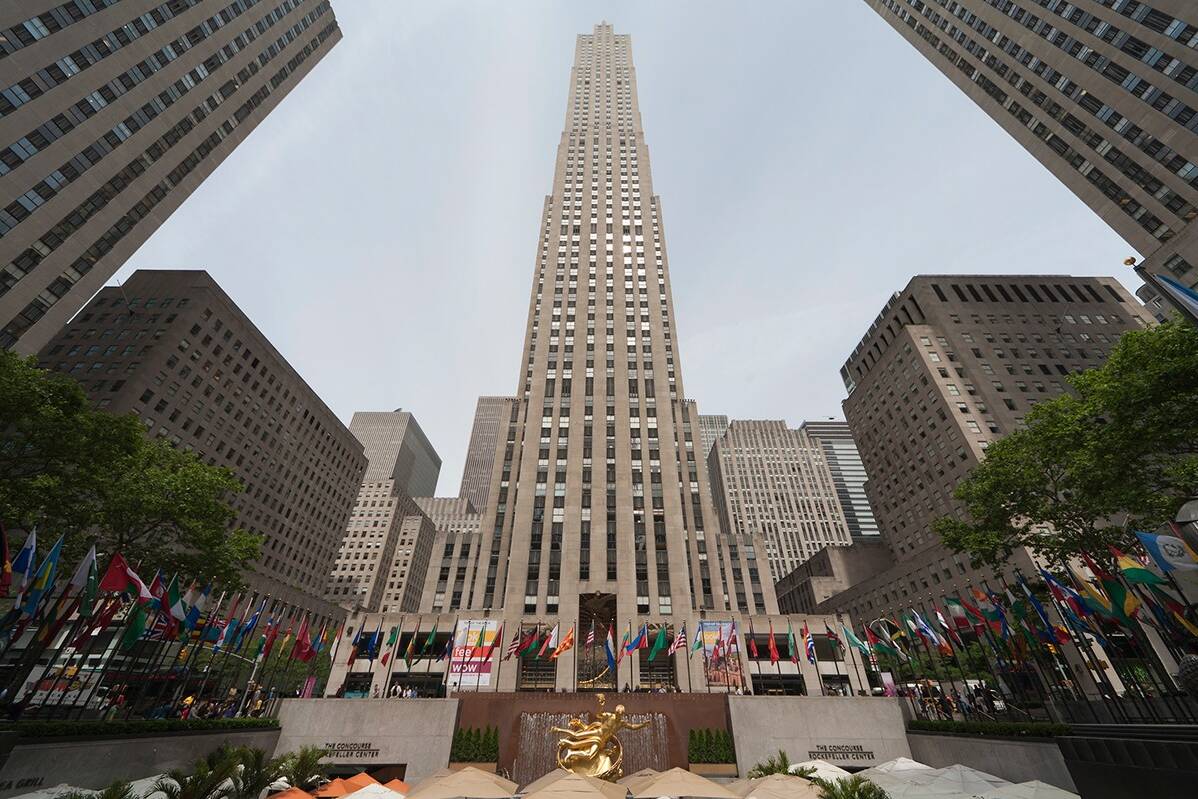Central Park is an expansive urban green space in the heart of Manhattan. As the most visited urban park in the United States, Central Park serves as an oasis and cultural hub within one of the world’s most bustling cities. Lets dive into how this iconic New York landmark came to be.
Table of Contents
Background and Early History of Central Park
Rapid population growth in NYC during the early and mid 19th century created a huge need for accessible recreation areas in Manhattan. Central Park was conceived during this era.
Advocacy for a Large Park in Bustling NYC
By the 1840s-1850s, New York City had ballooned in size but lacked a substantial green refuge for its residents. Many civic leaders began calling for the creation of a major park amidst the urban jungle. Poet and editor William Cullen Bryant and famed landscape architect Andrew Jackson Downing were early and influential advocates.
Downing and Bryant argued that the health, sanity, and community spirit of New Yorkers depended on having a nature retreat from the chaos of daily life. This view steadily gained widespread support, including from elite circles.
Controversy Over Site Selection and Land Seizure
In 1851, Mayor Ambrose Kingsland urged the city to set aside land for a grand public park. A tract of 778 acres on the island’s east side called Jones’s Wood was approved.
However, the state ruled this site unconstitutional. Attention turned to a more expensive 750 acre plot dubbed “Central Park”, bounded by 59th-106th streets between 5th and 8th Avenues. Though more centrally located, acquiring this land was deeply controversial.
Through eminent domain, the city evicted and destroyed an existing community called Seneca Village to build Central Park. The predominantly lower-income, immigrant village dated to 1825 but was razed by 1857 via a state seizure ruling. Reactions to displacing over 1600 residents were mixed and bitter.
Ultimately, over $7 million was paid for the new park grounds. Adjusted for inflation, this equates to roughly $232 million in 2024 dollars – more than the USA’s Alaska Purchase!
Contest and Construction of Central Park’s Layout
In April 1857, the government held a competition to design the Central Park layout. Out of 33 entrants, the Greensward Plan by Frederick Law Olmsted and Calvert Vaux was selected in 1858 and won a $2000 prize.
Rather than integrating the park layout with NYC grid system, Olmsted and Vaux introduced curved paths, lush landscaping, and a pastoral feel reminiscent of natural scenery. Their vision would heavily influence landscape architecture and urban planning for generations.
Construction started that year and existing settlements in the area were demolished – with one historic exception. Blockhouse No.1, a remnant from the 1812 War of 1812, still resides inside Central Park today.
How Central Park was Constructed and Developed
Bringing Olmsted and Vaux’s Greensward Plan to life presented colossal engineering problems due to the landscape’s rocky terrain and swampy soils.
Phases and Timelines
Heavy construction lasted around 20 years, starting in 1857 in the park’s southern portion and reaching completion in 1876. Removal of over 20,000 cubic yards of bedrock and topsoil proved extremely laborious, even with 19th century machinery.
Adding to scheduling pressures and costs, New York purchased 65 more acres along the park’s northern end in 1859. Integrating this new section posed complex grading issues.
Landscaping on a Grand Scale
Sculpting Central Park necessitated moving over 5 million cubic feet of earth – comparable to the volume excavated for the entire Panama Canal!
Over 4 million trees, shrubs, and plants were planted to beautify the grounds. Since its 19th century origins, Central Park’s roughly 500 vascular plant species make it surprisingly biodiverse. Its mix of lawns, woods, lakes, streams and rocky outcrops form a variety of micro-habitats.
To irrigate this bountiful greenery, engineers built an underground aqueduct system tapping into city reservoirs. All artificial structures like fountains and pools are supplied via this plumbing.
Paths, Roads, and Traffic Flow
One integral part of realizing Olmsted’s vision was traffic circulation planning. His Greensward Plan introduced the concept of “separate spheres” to handle pedestrian, equestrian, and eventually automobile movement through Central Park.
Sunken transverse roads were built passing below ground level to enable visitors to cross the park without interfering with pastoral scenery and recreation. These linked the east and west sides of Central Park without disrupting the landscape’s harmony.
To discourage fast driving, Olmsted and Vaux incorporated winding paths with panoramic vistas and very tight curves. However, this caused issues once cars became popular early last century. Accidents and reckless speeding peaked in 1929, prompting conversion of scenic drives to one-way traffic plus new traffic lights and reduced speed limits shortly after.
Structures Enhancing Form and Function
In executing their Greensward vision, Olmsted and Vaux built numerous decorative Gothic Revival style structures like bridges, arches, and rustic shelters (many now gone). Their picturesque design language aimed to accent and frame nature through subtle manmade forms.
More imposing buildings that debuted later include stately Bethesda Arcade and Terrace (opened 1873) and hearken back to an Italian Renaissance style. Other iconic Central Park creations are Belvedere Castle (1869) and the fanciful neoclassical police station (1870s).
The Old Reservoir, while less romantic, was equally key to the park’s beginnings – storing and supplying clean water to nourish its bountiful plantings. Its rectangular receiving basin was redesigned as the curvaceous Jacqueline Kennedy Onassis Reservoir, one of Central Park’s most scenic features today.
Challenges and Controversies
Central Park’s founding designers Olmsted and Vaux repeatedly clashed with construction commissioners pressing for lower costs and faster timelines. Vaux resigned in 1863 over perceived compromises undermining their vision.
In later decades, Moses’ imprint on Central Park was also complex. His extensive 1930s cleanup and additions like new playgrounds proved transformative. However, bulldozing cherished wooded areas for the Tavern on the Green ignited backlash. Striking balance between preservation and keeping Central Park vibrant is an ever-present challenge.
How Central Park has been Used and Maintained Over Time
Since debuting in 1858, Central Park has gone through major ups and downs in stewardship and condition. Its immense appeal has also sparked encroachments for cars, commerce, and housing over time.
Early Popularity and “Golden Age”
During its early decades, Central Park became an instant escape and sensation, attracting all walks of life. Its greens thrilled New Yorkers starved for fresh air and open space amid cramped tenements dominating the cityscape back then.
By the late 1860s, the park hosted over 3 million annual visitors and 850,000 horses already. It was soon attracting tens of thousands for daily carriage processions and weekend concerts on the Mall. For a shining period, Central Park was the premiere recreation zone for 19th century New York of all classes.
Gradual Deterioration and Moses-Led Revival
However, the early 20th century brought subsiding investment in the park. As Manhattan neighborhoods evolved and new attractions emerged, Central Park’s sheen faded. Deterioration was exacerbated by the Great Depression’s strains on city budgets in the 1930s.
When Robert Moses became NYC Parks Commissioner that decade, Central Park was extremely run down with many dead trees and eroded, weed-strewn landscape. Through the New Deal program, Moses channeled funds and labor into extensive revitalization between 1934-1960s. His work restored greenery, added new playgrounds and the Wollman Rink, cleaned up the Lake, and more.
However, preservationists accused Moses of demolishing fine old structures insensitively for new amenities to draw crowds. Controversies like razing a wooded glen for the Tavern on the Green restaurant sparked ongoing debate over balancing use versus conservation in managing Central Park.
1981 Central Park Conservancy Founding
By the 1970s, Central Park’s reversing fortunes and soaring crime left it beleaguered again. In 1980, the private non-profit Central Park Conservancy was founded to revitalize it through fundraising and volunteering. This public-private partnership with the NYC Parks Department aimed to restore the majestic Greensward vision.
Ongoing Restoration and Present Stewardship
After assuming leadership responsibilities in the 1980s, the Central Park Conservancy’s dedicated zones and horticultural management slowly nursed the landscape back to its former beauty over years. Highlights like the formal Conservatory Garden were brought back to life via generous donations.
Today, the Conservancy continues maintaining Central Park through its 49 gardener zones, while addressing problems as they emerge. For example, drought, erosion, tree diseases, and wear-and-tear from over 40 million annual visitors keep Conservancy gardeners very busy!
Car traffic issues have continued flaring up over time as well. Recently, NYC government banned cars from Central Park drives below 72nd street and is considering expanding vehicle restrictions further.
Why Central Park Matters Culturally
Beyond just greenery, Central Park has enormous cultural meaning, both as a democratic refuge and source of artistic inspiration. Its economic impacts on NYC are also formidable.
Visitor Statistics and Economic Value
Today Central Park entices over 40 million locals and tourists annually – comparable to iconic sites like Walt Disney World! Its scenic backdrops alone generate over $135 million from hosting an average 10 film shoots daily.
Including surrounding real estate values and patron spending, this park yields New York City over $1 billion in annual economic activity and tax income. Truly, Central Park one of NYC’s most lucrative attractions!
Artistic and Media Portrayals
As an urban arcadia, Central Park has captivated creative fields for ages. It appears in over 230 movies from classics like 1942’s Love Affair to Maid in Manhattan and superhero blockbusters (Spiderman to Ghostbusters).
The park even inspired an entire musical genre called Central Park minimalism! Iconic concerts like Simon & Garfunkel’s 1981 reunion boosted its music associations further.
Its literary cameos date back to 19th century novels right through modern TV shows like Gossip Girl. Truly New York City’s backyard, Central Park permeates so much culture!
Gathering Spot for Public Events
Beyond arts, Central Park anchors countless community happenings. Its lawns accommodate over 50,000 music fans for the New York Philharmonic’s annual summer concert.
Shakespeare plays at the Delacorte Theater tradition started in 1962, while SummerStage now proffers over 100 dance/music performances between June and August!
Whether for a Civil Rights rally or showing off carnival finery at Carnaval San Romano, Central Park is quintessentially where New Yorkers converge for self-expression.
Fueling Upper Manhattan’s Real Estate Boom
Famously, proximity to Central Park translates into prime property. Since its completion, bordering land values and development intensified. 5th Avenue alongside the park soon became “Millionaire’s Row” – a nickname still fitting over a century later!
By one 2005 estimate, the total worth of real estate near Central Park exceeds half a trillion dollars thanks to its coveted lush views. From Midtown high rises to landmark rowhouses, the park remains the engine elevating its neighborhood’s prestige today.
Top Attractions and Activities Near Central Park
Given its prime real estate, there’s no shortage of sites to see and fun to be had bordering Central Park! Museums like the Metropolitan Museum of Art and Guggenheim abut its eastern edge, while the American Museum of Natural History and niche gems like the New York Historical Society line the west side.
The park’s south end dazzles with Columbus Circle’s shopping mecca and cultural draws like Carnegie Hall and Lincoln Center beyond. Meandering Central Park trails ultimately deposit you amid attractions whichever route you wander!
Beyond museums and monuments, activities in and around the park are endless. Pedal its 6 miles of scenic cycling paths or brave steep rock climbing walls at its south end’s Rat Rock. Outdoor events like free theater at the Delacorte and concerts at Rumsey Playfield often surprise passerby too.
With playgrounds, wildlife exhibits, sports fields and more, Central Park promises fun for all ages dawn til dusk! No New York City visit feels complete without enjoying this activity hub.
Top Restaurants and Eateries Around Central Park
Fortifying between adventures is all too easy around Central Park’s array of eateries. Haute cuisine havens like SESAMO, the Russian Tea Room, Per Se and Masa border the park, as do celeb chef outposts like Thomas Keller’s TAK Room. 5-star hotels lining its rim also offer ritzy respite, notably the Plaza Food Hall’s elegant bites.
Tucked away on 10th Avenue in Hell’s Kitchen, Sesamo offers a peaceful Italian-Asian fusion respite from tourist hordes. For affordable sophistication without Central Park prices or crowds, Sesamo’s a savvy insider pick!
And Central Park itself contains beloved dining gems. The Loeb Boathouse dishing American fare on the Lake’s shores is a quintessential experience many save room to savor! Wherever your Central Park wanderings take you, tasty pitstops surely await nearby.
Conclusion: Keeping NYC Whole with Central Park
In closing, it’s astounding how this manmade Arcadian paradise touches countless New Yorkers over 150+ years since conception. By providing 840 acres of urban wilderness in one of world’s densest cities, Central Park fills an irreplaceable emotional, recreational and even spiritual niche.
The story behind New York City’s Most Famous Park is still evolving. With ongoing environmental and social pressures, striking the right balance between use and preservation remains Central Park’s hallmark challenge.





